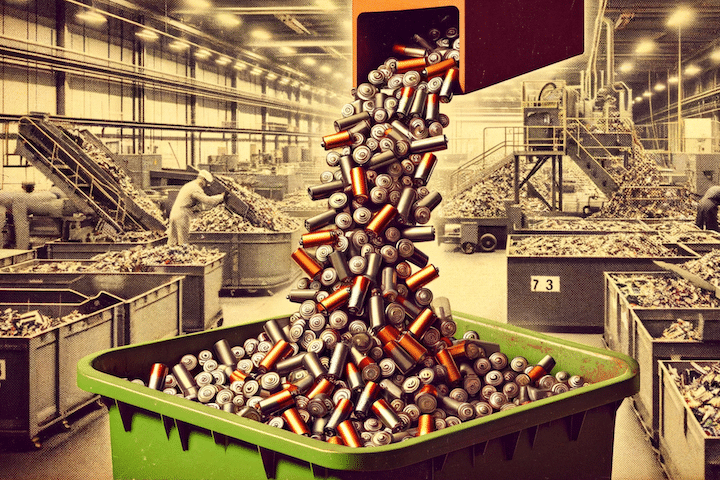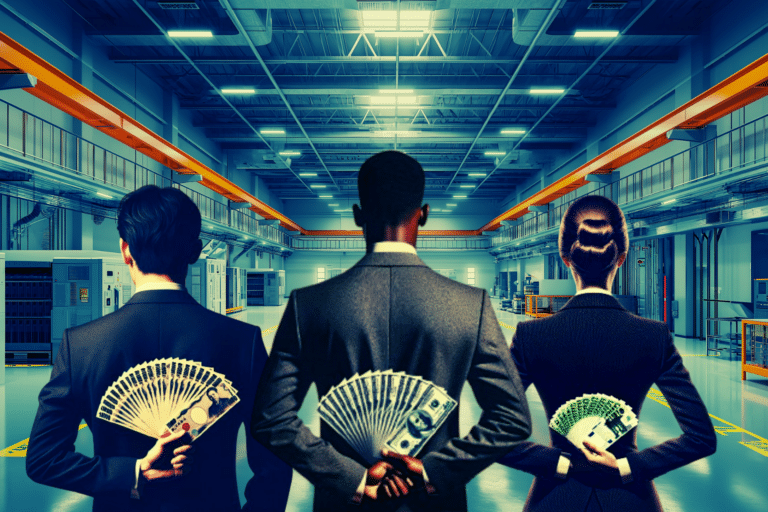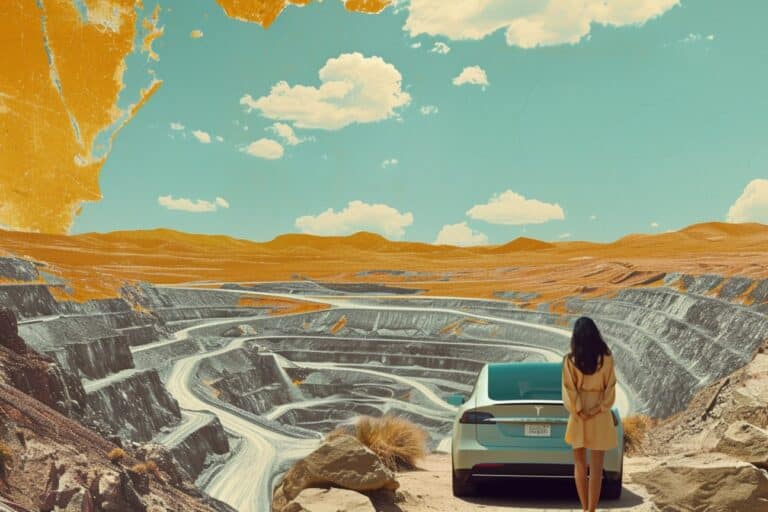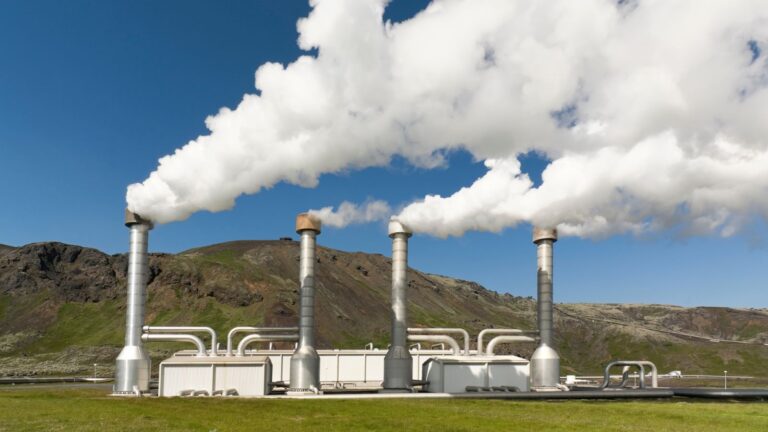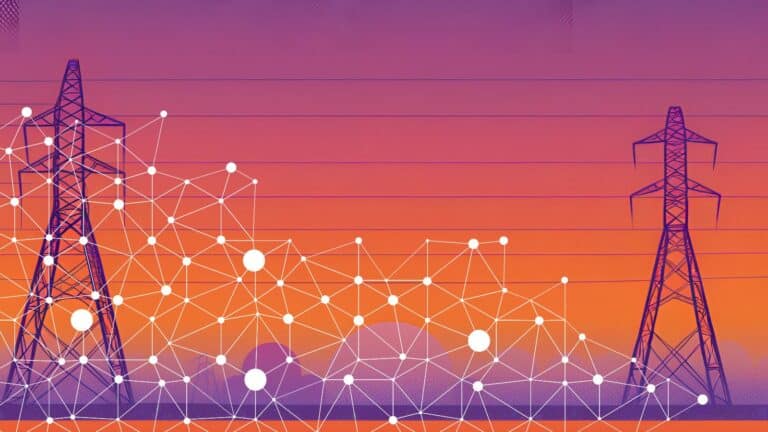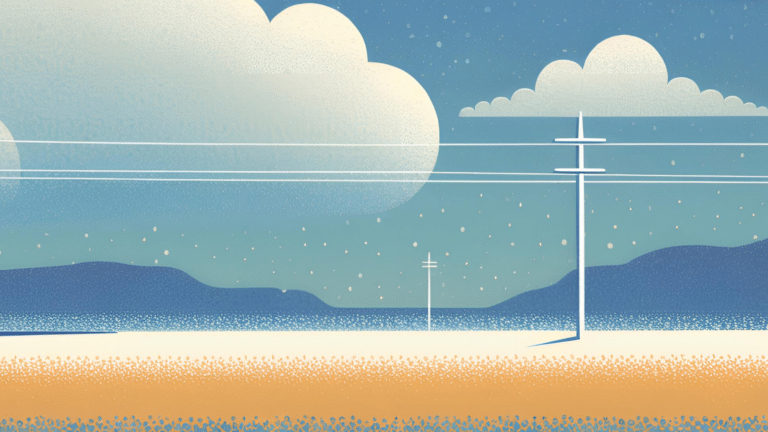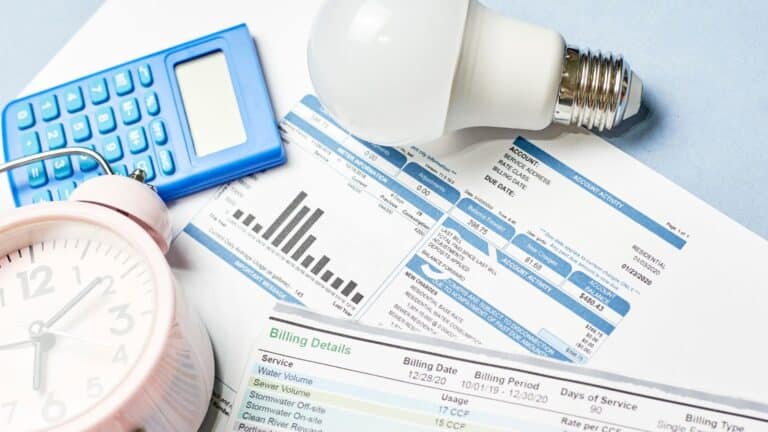Catherine Traywick: [00:00:00] I don’t want to say we were anticipating the worst case scenario, but we kind of were because we had come off of covering the blackouts in California. [00:00:06][6.6]
Melissa Lott: [00:00:09] This is Catherine Traywick. She’s an editor at Bloomberg covering energy and climate change. And in August of 2020, she and her team covered the heat wave that suffocated the Western United States, forcing power plants to shut down and causing unexpected blackouts in California. Fast forward, and in February 2021, Katherine and her team started tracking a massive winter storm spreading across the U.S. from the Dakotas down to Louisiana. Her focus was mostly on Texas, where the state’s grid was about to be placed under tremendous pressure. [00:00:37][27.6]
Catherine Traywick: [00:00:38] So we already knew very recently how extreme weather could text the grid in really unexpected and unprecedented ways. [00:00:46][8.3]
Melissa Lott: [00:00:47] As snow and freezing temperatures rolled in, Katherine started hearing concerns from sources who worked in the Texas energy industry. Natural gas prices started shooting up and fuel supplies were getting tight and electricity rates began skyrocketing. [00:00:58][11.3]
Catherine Traywick: [00:00:59] These were all things that we saw happen in California. So we knew that something was going to happen. We just didn’t know the extent. [00:01:06][6.8]
Melissa Lott: [00:01:07] And on the morning of February 14th, Katherine woke up to a dire situation that was quickly turning into a catastrophe for Texas. [00:01:14][6.5]
Newsreel: [00:01:15] This morning, Arctic air power grids failing and millions left to cope with the bitter cold. [00:01:19][4.7]
Catherine Traywick: [00:01:20] Overnight, things had just kind of fallen apart. [00:01:24][4.2]
Newsreel: [00:01:25] Amarillo, Texas, getting pummeled with snow overnight. Cars and trucks sliding off the road. Tow trucks out rescuing drivers as temperatures dropped near zero. Part of the Lone Star State hitting record low temperatures not seen in a century. [00:01:37][12.1]
Melissa Lott: [00:01:38] The extreme cold caused demand for electricity to skyrocket as people tried to keep their homes warm and safe. And suddenly, vast swaths of the state’s grid shut down. Nearly 5 million Texans connected to the state’s main grid lost power, including me. Hours turned into days, and for some it was nearly a week before the lights came back on. And as soon as those lights went out, the fingerpointing started. [00:01:59][20.9]
Newsreel: [00:02:03] The people that installed the wind turbines in Texas, they didn’t pay that extra two grand to install the deicing technology. [00:02:10][7.1]
Melissa Lott: [00:02:11] And shame on. [00:02:12][0.8]
Catherine Traywick: [00:02:12] The state government for not having better foresight, not only for a particular storm, but the consequences of this sort of green energy. [00:02:19][6.6]
Newsreel: [00:02:20] When it comes to green energy. The people that advocate for it. They don’t like reality. You know, windmills and solar are backup singers. They aren’t the lead singer. [00:02:28][8.8]
Catherine Traywick: [00:02:29] The narrative that was shaping up in the media was that this was a big failure of wind power because Texas has one of the largest wind fleets in the country. It has invested heavily in wind power. And if all the wind turbines are freezing, then that shows that renewables are not reliable. [00:02:46][17.0]
Melissa Lott: [00:02:47] But that narrative didn’t sit right with Kathryn. Texas had been through freezes before. The renewables didn’t cause the grid to collapse. [00:02:53][6.0]
Catherine Traywick: [00:02:54] There’s no way that like wind is to blame because in the winter time, wind makes up a relatively small proportion of the energy mix. In Texas, it’s mostly natural gas and coal. So I’m like, this is clearly a bad situation for wind, but wind is not what’s bringing the whole system down. There’s something else happening here. [00:03:12][17.9]
Melissa Lott: [00:03:13] This is the big switch, a show about how and why we’re cleaning up our energy systems as we transition to a net zero future to slow climate change. We need to transform our buildings, our homes, our cars and the economy to reduce greenhouse gas emissions as quickly as possible. But how do we do it right? I’m Dr. Melissa Lott, and I’m the director of research and a senior research scholar at Columbia University’s Center on Global Energy Policy. And I study the technologies, policies and systems that keep our electricity grid running and how we can transform those systems to make them more sustainable while making our communities healthier, reducing inequalities and ensuring that our energy supplies are reliable and affordable. We’re calling this show the Big Switch, because that’s exactly what we’re all living through, a historic switch in the way that we power and fuel our lives so we don’t overheat the planet. In this first season, we’re exploring the backbone of the low carbon energy system, the power grid. If you’re listening to the show, chances are good that you know a little bit about energy, or at least you’re interested in the topic. You’re probably also aware that climate change is a problem. But you’re here because you want to learn more. You want to understand what we can do to transition the energy system to net zero greenhouse gas emissions. The goal of the show is to give you a full picture of the stakes, the solutions and the tradeoffs as we move to net zero. But let’s back up for a second. What is net zero even mean? What it means is that we’re achieving a balance between the heat trapping gases that we put into the air and what we take out. So in this conversation, we’re going to start with the electric grid, the vast machine that runs everything around us. And it’s also the part of the energy system where we’re seeing the most dramatic changes already today. Extremely cheap renewable energy is knocking fossil fuels out of the mix. Solar, wind, batteries, fuel cells and even software are turning buildings into power plants and people into power brokers. It’s pretty neat. The electricity grid is both highly visible. So think about those large power plants and smokestacks that you might see when you’re driving down the highway, but it’s also invisible. We almost never think about electricity until it’s gone and the lights go out. So what is the power grid exactly? [00:05:27][134.1]
Dr. Emily Grubert: [00:05:28] This is a very funny question to me, partially because I have a little bit of a reputation for always being able to spot the accidental power plant in a movie in the background. I think what it is. Yeah, exactly. Exactly. Like, I can see a smokestack that’s a very strange shape for a normal building. [00:05:43][15.0]
Melissa Lott: [00:05:46] This is Doctor Emily Grubert. She’s an assistant professor of civil and environmental engineering at Georgia Tech, and she studies large infrastructure systems. Think water, electricity and buildings. And how each one of these systems depends on each other. [00:05:58][12.6]
Dr. Emily Grubert: [00:05:59] When we talk about the grid, generally, we’re talking about energy supply and specifically electricity supply. And so this is the combination and the network of power plants, transmission lines, which are the big high voltage lines that move power long distances, and then distribution lines that are these lower voltage lines that move the electricity to your house or to other buildings and things like that. All on the supply side, that is a massive, massive amount of infrastructure. It’s a pretty diverse infrastructure. So lots of different kinds of power plants. Transmission lines aren’t all the same. The sort of thing I think the failure and maybe I’m getting a little bit ahead of myself, but we tend to talk as engineers talking about the energy system and modeling the energy system, about the grid and about the supply side very specifically. I would argue the energy system very clearly actually has to include the demand side. So a building or stuff like that where we’re actually seeing that energy getting used. [00:06:49][50.0]
Melissa Lott: [00:06:50] What are the other big pieces of infrastructure that are tied into it? Like, I’m thinking about natural gas. I’m also thinking about big things that use it that are also infrastructure like water. But I mean, is that right to think of it that way, or do you think of it differently. [00:07:02][12.0]
Dr. Emily Grubert: [00:07:03] Once you start moving out? It’s hard to come up with something that isn’t connected to the system in terms of, I think the really most immediate infrastructure elements that do show up in relationship to the electricity supply system. Fuel supply is probably the most obvious. So things like coal mines, natural gas wells, pipelines, rail trucks, in many cases, those ways that we actually extract fuel and then move the fuel to power plants are very, very much integrated with these systems. As we start talking about decarbonizing and moving away from fossil fuel based power plants to not fossil fuel based power plants. What I think is also very interesting about this transition is that that fuel supply piece of it starts to look very, very different because most renewable plants gather their fuel at the site of power generation. So you don’t mine wind, put it on a train and then bring it to a wind turbine. You get it where the wind turbine is. And that’s actually very, very different in terms of link to infrastructure than what we have now. But then, like you’re saying, once you start going out into, you know, what systems are actually allowing these power plants to function and then what systems at the power plants actually responsible for keeping on, you start getting into all these looped networks because thermal power plants need water to cool. They need electricity, actually, which is part of the problem that we often see with these major outage events. And there’s a lot of other circularity, I think, within the system that are maybe not that obvious sometimes. [00:08:21][78.7]
Melissa Lott: [00:08:22] We’ll hear more from Emily later on about how these systems can fail, sometimes catastrophically, as extreme weather events get worse. And that brings us back to Texas. In order to understand how to get things right. When we clean up the energy system, we first have to examine what can go wrong when we don’t plan for the future. [00:08:42][19.3]
Newsreel: [00:08:42] We’re prepared for the heat, but it’s such a rare occurrence here for what we’re going through now to happen that these electric generating companies just are not prepared for it to happen. It happens every ten years if they’re not ready for it. We knew this was coming. Despite that, some electric providers simply were not ready. And whatever steps that they did take to winterize their own equipment, it just wasn’t enough. And that is what plunged 2 million Texans into the dark today. [00:09:09][26.8]
Melissa Lott: [00:09:10] I work at Columbia University, which is based in New York City. But Texas is my home. My family’s from here and I went to college here. Texas is one of those microcosms of the big switch that’s happening in electric grids around the world, fast growing wind and solar aging coal plants that are getting replaced, the need for new power lines to reach distant renewables. Oh, and Texas has its own grid. Literally, it’s the only state in the lower 48 with its own power grid. But that grid is also increasingly vulnerable to these extreme weather events that we’re seeing. And we saw this play out in February of 2021, on Valentine’s Day weekend when a historic cold snap and snowstorm rolled in. During that cold snap, I was at my house in Austin, Texas, and I was glued to the news and to Twitter trying to figure out what was going on. And meanwhile, Katherine Treybig, the Bloomberg editor, was on the phone with grid engineers trying to figure out how bad this was going to get. [00:10:03][53.2]
Catherine Traywick: [00:10:07] There were natural gas plants and there were wind plant owners who, a week before the blackouts, were notifying ERCOT that they were anticipating that they would have generation offline because of the freezing conditions. [00:10:19][12.9]
Melissa Lott: [00:10:21] So a quick pause here. You’re going to hear the word ERCOT a lot throughout the season. ERCOT is the Electric Reliability Council of Texas. These are the operators who oversee most of the state’s grid and its power plants, which we also call generators. These power plants produce most of the state’s electricity, which we also refer to as generation. [00:10:39][18.9]
Catherine Traywick: [00:10:41] The gas generators were notifying ERCOT of potential gas supply issues and also a little bit worrying about the weather, but not as much. [00:10:49][8.5]
Melissa Lott: [00:10:50] But then came the evening of Sunday, February 14th. Temperatures dropped fast. Millions of Texans living in homes not designed for the cold cranked up their heaters. This sent demand for electricity skyrocketing. At the same time, homes and businesses with natural gas heaters squeezed an already tightening gas supply. And as demand for both power and natural gas shot up. Power plant equipment actually began to freeze and a grid designed to handle those peaks in summer was not prepared for prolonged cold in the winter. And suddenly it looked like there just wasn’t going to be enough supply to meet demand. [00:11:21][30.9]
Catherine Traywick: [00:11:22] That was the first sort of like, oh, moment. This is a serious thing that’s happening right now. We haven’t seen something like this. This definitely didn’t happen in California. This is a new thing. [00:11:32][10.6]
Melissa Lott: [00:11:33] And yet Catherine saw that the people who ran the grid from the power plant engineers to the operators at ERCOT, to the regulators who oversaw the whole system, seemed to have unwavering faith that everything was just going to work out. [00:11:45][11.7]
Catherine Traywick: [00:11:45] Nobody anticipated that what happened would happen. Everyone seemed to have faith that the system would work. I mean, at the most people just thought supplies will be tight, but we’ll adjust. Everything will be fine. On the off chance that we have some blackouts, just be rotating like 45 minutes, we won’t be a big deal. [00:12:07][21.9]
Melissa Lott: [00:12:08] We know now that it was a very big deal. [00:12:10][2.1]
Newsreel: [00:12:12] Pipes are freezing and breaking across central and north Texas right now, faster than plumbers can get out to fix them. Every plumber in town is backed up. The phones are ringing off the hook and. [00:12:22][10.0]
Melissa Lott: [00:12:22] The water is flooding. And it’s like it’s like the Titanic in here. [00:12:26][3.8]
Newsreel: [00:12:26] What was supposed to be rolling blackouts to protect electrical grids has turned for some days into days without heat. [00:12:35][8.5]
Melissa Lott: [00:12:36] It got down to about 51 degrees in our house by 6:00. [00:12:38][2.5]
Catherine Traywick: [00:12:39] And we have a two month old baby. We were snuggled up, but it was just a little bit too. [00:12:43][4.5]
Melissa Lott: [00:12:44] Much before I lived in Austin. I grew up in California, and my family lovingly refers to it as America’s disaster theme park. We had earthquakes and mudslides and heat waves and floods and droughts. And so growing up in a place with so many natural disasters like you get used to just preparing for certain things, having canned food around water. But that did not prepare me for what happened in Austin. I had expected. We’d all expected kind of rolling blackouts, maybe no power for 45 minutes at a time, not four days, which is how long we ended up being without power and without water. I remember waking up at about 2 a.m. to the beeping of our battery saying, The power’s out, Everything was dark. And I went, okay, this is what we were warned about. This is what we were prepared for. Then I woke up a few hours later and the power was still out. Our all electric house was getting cold really fast, so we bundled up our family and we made our way down the street. It was about seven degrees outside, if I remember correctly, and we got our whole family down the street to my parent’s place. They had electricity, but also natural gas, and they were able to keep their fireplace running and keep the temperature like inside the house a little north of 40 degrees. So I remember getting to the house and I remember going out to the car to kind of charge some batteries, charge my phone. And I came back in the house and I smelled I smelled the gas, I smelled incomplete combustion. I mean, I study energy and air pollution for my living. I smelled it. I knew what it was like. I know what carbon monoxide does to your body. It makes you go to sleep and not wake up. So I walked in the door and I smelled the gas. So I went over to the carbon monoxide detector and realized that the batteries had died. And I went, Oh, Lord, you know, what do I do now? I am faced with this choice between keeping the house above freezing or potentially poisoning my whole family. That is a terrible choice. So what we did was we kept the gas fireplace running until the sun went down that night. We couldn’t drive anywhere. The roads were way too bad and we needed to save the fuel in our cars in case we had to get out the next day. So we decided to turn off the fireplace that night and just pile every blanket we had on top of us to stay warm. But I was still worried. Like I was still worried about the build up of all that carbon monoxide in the house. And I just I could not sleep. There was no way I could sleep. I have a small kid and I spent the whole night with my hand on one part of their back and my husband’s hand on the other. So sleeping like that was terrifying because I was afraid of falling asleep. I also was looking out my phone at the weather reports and at the status of the grid and realizing that we were going to be in this situation for a while. And then I started reading on the news about how many people were being affected by this. So I want to put my story in context. We were some of the lucky ones in the state. Millions of Texans were freezing in their homes. The Houston Chronicle actually reported that almost 200 people were killed because of these outages. This experience with the blackouts in Texas was an intense and emotional one for me. It was also one that was a very powerful reminder of why I do what I do and why I study these systems. The power grid. Our power system is vital to everything. So in the middle of these outages, I mean, people were confused and they were scared and they were angry. And this all makes complete sense. It made sense that people were looking for something or someone to blame. So the first thing that got blamed was wind. But as Catherine Traffic found out, the entire system was vulnerable to the extreme weather, including the natural gas system. [00:16:50][246.5]
Catherine Traywick: [00:16:51] One thing that no one anticipated was that power started getting cut to gas pipelines and also to gas compressors and even gas wellheads. So much of the grid in Texas is dependent on natural gas. Texas has a lot of gas. It’s not stored. It goes straight from the field where it’s pumped into a pipeline to a power plant. So when the blackout started, the gas compressor seasons, the pipelines, the wellheads gas completely stopped flowing, which meant that the gas plants that were still running no longer had gas supply and they couldn’t run. So they had to shut down. The outages just kept getting worse and worse because all of these cascading things that no one anticipated. [00:17:38][46.9]
Melissa Lott: [00:17:39] So when we say that the grid is the backbone of society, this is what we mean. If it breaks, everything else breaks. So as we transition to a low carbon economy, we need to make sure that the grid is both incredibly strong and also incredibly flexible. [00:17:53][14.2]
Dr. Varun Rai: [00:17:54] Backbone is what makes the thing stand and gives it the basic stability and basic functional structure. So from that perspective, totally, the grid is backbone. The other way to think is you take away the backbone, you take away the grid, everything falls apart, and it fits even virtually and figuratively, very, very, very well. [00:18:14][20.6]
Melissa Lott: [00:18:15] This is Dr. Varun Rai, and he’s a professor at the LBJ School of Public Affairs at UT-Austin. Like me, he lives in Austin. And like me, he studies energy. Also like me, he rode out the Texas outages at home. [00:18:27][12.1]
Dr. Varun Rai: [00:18:28] It meant that we became down to cooking on firewood in our fireplace, which which luckily is well rented. And it was a moment of connecting back to living with nothing. And like in almost two and a half, three centuries ago. [00:18:42][13.9]
Melissa Lott: [00:18:42] And he grew up seeing his family cooking on mud cookstoves. And he watched kids on rooftops rigged up small wires to the grid, passing above their village homes. He saw very clearly what people gain when they have access to electricity and what they lose if they don’t. [00:18:56][13.9]
Dr. Varun Rai: [00:18:57] These are some of my early memories and connections with energy. [00:19:00][3.4]
Melissa Lott: [00:19:01] Today and directs the Energy Systems Transformation Working Group at UT-Austin. That’s an academic way of saying that he researches how new technologies and policies can create complex changes in energy systems. [00:19:12][10.4]
Dr. Varun Rai: [00:19:13] And so what we saw in Texas is is just another reminder that there are attributes of reliability that are fundamentally very important. And any system, however we transition it to, that’s one aspect that is almost unchangeable. [00:19:32][19.1]
Melissa Lott: [00:19:33] So the transition that Viren is following is unfolding at an astonishing speed as renewable energy is getting super cheap and concerns over climate change grow. There’s now more money every year that’s invested in renewable electricity and energy efficiency than in coal, gas or nuclear combined. And this is why the ever cleaner grid is so vital to hitting net zero carbon emissions across the economy. So when people say the energy transition, what do they mean? [00:19:59][25.2]
Dr. Varun Rai: [00:19:59] They’re full text books on what to do. [00:20:03][3.3]
Melissa Lott: [00:20:03] Well, let’s go to the glossary. Hold on. Okay. Know I know what you mean. [00:20:07][4.0]
Dr. Varun Rai: [00:20:08] Yeah. And there are multiple ways to think about energy transition. And they all start with how deep it is, how long it is, and the one. And that could be as limited or narrow as. Changing of incandescent lamps to LED bulbs. It doesn’t transform the full economy. Now, on the other end of the spectrum, and that is the kind of energy transition we are really talking about now when we talk about net zero. That is whole scale change of how we produce, move store and use energy and how all of those changes actually change the functioning of the economy in terms of how we manufacture goods, what types of goods are produced and sold, and how we as consumers actually interact as communities and in the use of that energy. And so that’s the other spectrum of, you know, what the energy transition is. It’s all of it. But the one we are talking about right now is the biggest one, the mother of all energy transitions. [00:21:12][64.5]
Melissa Lott: [00:21:13] So let’s break it down. So why do we want to electrify things? So why would I want to have my car or my heater or anything else really be powered by electricity rather than gasoline or natural gas or I guess in the case of power, coal. [00:21:28][14.4]
Dr. Varun Rai: [00:21:29] If we electrify our vehicles and supply that electricity in a clean way, which is, you know, without the carbon emissions, then, you know, we have dealt with the solution while still giving us that that service. Now you take that same concept and apply that to your heating of the house, the natural gas versus electric heating. You do that for your cook stove and you do that the same thing for how we power our businesses and how we manufacture goods and so on. And it all connects back to we need to go down to net zero in terms of emissions of greenhouse gases. And the only out we see to doing that, or at least majority of that, is by electrifying a lot of our energy system. [00:22:16][47.7]
Melissa Lott: [00:22:17] So here’s the thing, though, isn’t a lot of our power I’m playing devil’s advocate. Isn’t a lot of our electricity still coming from natural gas and coal? So, Well, electrification even make anything better? Or will we just be switching from going from gasoline and diesel to coal and natural gas? [00:22:33][16.0]
Dr. Varun Rai: [00:22:34] You electrify everything. And the question is, how do you supply that electricity? So that simply says, well, our electricity generation and use of it will increase. But if you do that more with sources that still emit greenhouse gases, then you’re basically worsening the problem, not not solving it. So that’s that’s a very important point. So to the extent you use wind or solar, that’s grid and you have to use a lot of it because, you know, those those don’t emit. At the same time, to the extent you use natural gas, you have to capture the emissions that happen in power generation using natural gas and then sequester it or store it underground or use it in different in different forms. But it has to go hand in hand. You cannot just electrify everything and then use any fuel that is at your convenience and disposal to generate that. Nor you have to still mitigate the emissions that happen from there. [00:23:36][62.2]
Melissa Lott: [00:23:37] And the last question, when you think about the grid of the future, what are you hopeful for? [00:23:43][6.3]
Dr. Varun Rai: [00:23:45] That’s what I’m most excited about, is to, of course, to get it right from a climate perspective, from an environmental perspective. But at the same time, I’m equally excited about the opportunity that we have to rebuild and build our new energy system in a way that brings everybody into this fold and shares the opportunities and the joy of being in a modern world that is fueled by sustainable energy system. [00:24:14][29.9]
Melissa Lott: [00:24:20] And in short, if we want to address climate change, we need to electrify as much as possible in our economy. It’s not everything in the economy, but it’s a lot more. But there are tradeoffs. Of course, the great is complicated. You change one thing and you might need to change a bunch of other things. All of this requires more than just a sprinkling of clean energy on top of the current system. It requires a big switch in how we build and operate our power grid. [00:24:47][27.7]
Dr. Emily Grubert: [00:24:48] Yeah, it depends how we design it. And I think that that’s one of the huge lessons that we have now, is that when we think about advocates for the switch, the really, really big challenge that we face is not only are we trying to learn how to do something entirely new against the backdrop of a new climate, but also how do we overcome a lot of the failures of prior industries? [00:25:08][19.7]
Melissa Lott: [00:25:14] And this brings us back to Emily Gruber, the Georgia Tech professor who you heard at the top of the show. To her, the cascading failures in Texas prove why we need to think differently about engineering the grid for a low carbon climate resilient world. It may seem counterintuitive, but climate change could potentially make deep freezes like what we saw in Texas more common and summer heat waves more intense and prolonged. That means that we need to be designing our systems to thrive in that new world. And you take your students on field trips, right? You take them out. They can see things, which is awesome. You would have been one of my favorite professors and their teachers. Can you take us on a virtual field trip to some of the things that were going on in Texas talking us like this? Rose This happened and just tell us what it looked like. What did it look like? What did it feel like as this was happening? [00:26:03][49.2]
Dr. Emily Grubert: [00:26:04] So starting maybe in people’s houses, what this probably looked like was suddenly it got very cold. You turned on a heater. If you have a gas heater, all of a sudden you’re pulling more of this of methane basically from a pipeline that is creating new demand in that pipeline system. The other big place that those pipelines are going that’s important in the story is the power plants. So the power plants that are using natural gas and are basically doing kind of the same thing that you do at your house if you have a furnace, which is basically pulling it off of a pipeline, lighting it on fire, and then using that for heat in this case to make electricity, they also suddenly have a lot more demand because people are also turning on their electrical appliances. The problem now is that there’s not actually enough gas in the pipes here. What we start to get into in the freeze situation, is this the problem, essentially that some of those lines were starting to freeze? This is where this gets very integrated and kind of hard to say in a linear way. But think about those power plants that want gas and don’t actually have enough gas. Those plants are starting to turn off. What you have in this event is basically now a shortage of electricity. Why this is important for the gas system is that a lot of those gas wells and the gas system itself actually requires some electricity. So now the power goes out. The gas wells that were already being a bit of a problem because you’re not being able to pull enough gas out, no longer have power. So now they can’t even provide what they were already trying to. Basically, you have this massive, massive demand for gas both at houses and at power plants. Not enough gas in the system. Where that then goes is that these power plants themselves either are frozen at this point and there’s some kind of stunning pictures, actually, of a lot of like icicles in the turbine halls at many of these power plants don’t actually have walls, which is maybe the mental image that people can be using here, kind of like big metal scaffolding with some really, really large equipment in the middle. But all these valves, stuff like that, start to get iced over. So now you have this combination of the power plants are frozen. The power plants can’t get gas, the gas system can’t get power. And so at the end of the lines, both starting from our person with the natural gas furnace and now maybe the other person with an electric heat pump or baseboard heaters or something like that, Neither of those groups can actually get their fuels either. At the end of the day, you have these big integrated failures that are kind of a combination of demand spiking and supply, not being able to deliver that extra in order to meet the new demand. [00:28:22][137.9]
Melissa Lott: [00:28:22] So it’s basically like it got really cold. I need a lot of gas and power and at the end of the day, I might not be able to have either one. But I’m not the only one who needs gas. Gas in my system. I’m not the only one who needs power. Actually, the gas needs to power. And then you’ve got this loop and all of a sudden just everything is failing. [00:28:39][16.5]
Dr. Emily Grubert: [00:28:40] And you summarize that much better than I did. I think, like, people need gas and power. Power needs gas. Gas needs power. Yeah. And ice makes it so that nobody can have any of it. [00:28:49][9.3]
Melissa Lott: [00:28:50] Right? Yeah. And that’s no good. So I know you’re not a climate modeler and you’re not a meteorologist. At least I don’t know that you’re running a secret like weather show that. [00:28:58][8.4]
Dr. Emily Grubert: [00:28:58] I know that. Okay. [00:28:59][1.2]
Melissa Lott: [00:29:01] But. Okay, we’ve got that caveat on the record. You are not those things. But can you. [00:29:04][3.7]
Dr. Emily Grubert: [00:29:05] Talk. [00:29:05][0.0]
Melissa Lott: [00:29:06] Briefly about, you know, what could we do to have prepared ourselves better? What decisions could we have made to prepare ourselves better or what lessons could we have taken away from previous outages? Because this wasn’t the first time 2011 wasn’t even the first time we’ve seen this. I was finding with Michael Weber. We both know from t I like articles back to the eighties and even like think of a 75 is the earliest one. We found 1975 where there was like it was really cold and it’s eerie how the same things were happening, just not on this extreme of scale. Yeah, but what could Texas have done differently? But more to the point, like as we go to net zero, what could we do differently to make sure these types of things don’t happen frequently in our system? [00:29:43][37.6]
Dr. Emily Grubert: [00:29:44] Yeah, it’s a great question, and my kind of unsatisfying answer is that how we make sure that these kinds of things don’t happen in the future really depends on what these kinds of things are like talking about How do we prevent power plants from not being available during really cold periods? That’s a bit of a different question then. How do we prevent these really, really dangerous outcomes from happening when we do have power outages? And I think my instinct, generally speaking, is to think about how do we make sure that we fail? Well, when there are failures, because, yes, we absolutely should be. Thinking about how to prevent failures from happening in the future. That said, because the climate is getting weird and because we’re moving outside of this historical understanding of how things work, the past no longer really predicts the future quite as easily as it has in the past, both in the climate system and honestly in the technology system as well. We’re moving toward a completely different type of energy system. We are going to have failures sometimes. And I think, again, we want to try to prevent those from happening to the extent that we can predict them. When the power does go out for a few days, what do you do? And I think those kinds of conversations around how could communication have been better? How do you make sure that there are actually some areas where people can go to be safe under power outage conditions, whether it’s hot or cold or a storm or whatever? One thing that’s been very interesting to watch coming out of some of California’s experience with rolling blackouts for public safety, power shutoffs and things like that associated with wildfires, they actually, over the several years that they’ve been doing this, have gotten much better about communicating where those outages are going to be and being very precise about which circuits they’re actually rolling. And so when you talk to people that have lived through it for a few years, it’s kind of the first year, maybe huge, huge areas were going out of power. Second years, they got a lot better about predicting where exactly they needed to shut stuff off to respond to these events. I’m not saying that that’s a direct translation to Texas, but really thinking carefully about, okay, if something goes wrong, how do you make sure that you’re doing what you need to do to keep the system working, but also doing that in the way that’s going to be the least impactful? These are things that we can plan for. We can do strategy games about stuff like that. And I think there are a lot of lessons on, you know, how do we blackout gracefully? [00:31:51][126.7]
Melissa Lott: [00:31:52] Is there a tension between investing in preventing things like the blackouts that we just experienced in Texas and investing in where we need our system to be in ten, 20, 30, 50 years from now? In other words, to get to net zero and what should we be focusing on and spending our money on? [00:32:08][16.3]
Dr. Emily Grubert: [00:32:09] It’s a great question. I yes, there are tensions. I don’t think that those tensions exist if you reframe the question a little bit. But I think there’s the question of basically, do we just try to adapt the systems that we have or do we try to both mitigate and adapt? If you’re just talking about doing one of those tasks, then yeah, there’s going to be tradeoffs. If you assume you have to do both of them, then the answer actually looks pretty clear. But I think we have a tendency to want to do like the lowest cost thing we can get away with a lot at the time. And so that tends to look like either let’s adapt, let’s weatherize all the gas plants and all the gas pipelines and stuff like that, or let’s mitigate, let’s build a whole bunch of wind and solar, but we don’t want to add the extra money to adapt those because we haven’t seen them fail in quite these same ways yet. So let’s do one or the other. We actually need to do both, but obviously that’s going to be a bit more effort and probably more expensive than doing just one or the other. If you don’t actually adapt and mitigate, you’re essentially committing yourself to more expensive disasters in the future that are likely to make people’s lives a lot worse. And so it’s not like you’re paying money that you’re not going to have to pay anyway, it’s just that you’re doing it preemptively in a way where you’re maybe not 100% sure that it’s going to pay you back the way you want it to. [00:33:18][69.2]
Melissa Lott: [00:33:18] I mean, I think we saw that in Texas, right? It’s not that we didn’t pay for things. We just paid for them in a very different way than on our power bills. [00:33:25][6.1]
Dr. Emily Grubert: [00:33:25] Yeah, exactly. Exactly. [00:33:27][1.7]
Melissa Lott: [00:33:28] And it’s one of those things that what I hear you saying as well. As you know right now we have a bunch of like fossil fuel infrastructure, carbon intensive things that we need to keep working as we transition, like we need to keep them going. So we got we got to do that. But we also need to realize, you know, that’s how we did things in the past, but that’s not how we want to do things in the future. So let’s make them movements to get to where we want to be in the future. Let’s make the choices to get there and not just focus in on patching what we have now that we actually forget about when we’re replacing big things that we don’t want to just replace them with something that looks exactly the same. We want replace them, but the thing we want to see in the future, so the zero carbon things we want to see in the future. [00:34:04][36.3]
Dr. Emily Grubert: [00:34:05] And I think one of the hardest things about this is, you know, we are going to have more failures. I think one of the huge tensions after the Texas event in particular is, you know, if you are investing a few billion dollars, are you investing those billions of dollars to keep assets that are close to the end of their life that we don’t actually want to still have running 40 years from now to guard against something that happens around every 40 years maybe? Or are you actually spending your money on something else but risking that maybe one of these events comes back a little bit faster than we expected and like that kind of thing starts to get really, really challenging because I think we are at real risk of trying to adapt our existing infrastructure without changing things over and thereby committing ourselves to more and more failures in the future. And having spent all this money on stuff that we actually are trying to shut down, thereby extending its life and making the problem even worse. [00:34:56][51.0]
Melissa Lott: [00:35:02] The outages in Texas were historically bad, but the problem could have actually been much worse. Again, Bloomberg’s Catherine Treybig. [00:35:09][6.9]
Catherine Traywick: [00:35:10] At some point around Wednesday morning, there were solar coming back online and ERCOT kind of characterized the solar coming back online as a sign that things were improving. We finally can see the light now. [00:35:23][13.5]
Melissa Lott: [00:35:24] Behind the scenes, though, the engineers in the control room at ERCOT have been ordering utilities to reduce demand to take people off the system wherever possible. They’ve been trying to avert an even bigger catastrophe, a cascading grid failure. [00:35:36][12.0]
Catherine Traywick: [00:35:37] Which could mean that the entire grid system goes black. That would be the absolute worst case scenario, that the system came within minutes of that, that if they had not started shutting off power to people, that the entire grid system of Texas could have gone dark. [00:35:57][20.5]
Melissa Lott: [00:35:58] And it could have taken months to get the grid up and running again. Coming up in episode two of the Big Switch, we’ll look more closely at how the power mix is changing and we’ll cover the confusion over whens role in the Texas outages. And we’ll take a hard look at the strengths and weaknesses of different players on the grid. Using sports analogies and Episode three transmission, we’ll ask What do you do with all that clean electricity? And episode four We’re actually going to step into the control room at ERCOT during the blackouts. How will new technologies change the way that we balance the net zero grid? Finally, in episode five, it’s all about the rules. Who is the grid of the future going to be designed for this with? The Big Switch is produced by Columbia University’s Center on Global Energy Policy, in partnership with Post-Script Media. Our producers are Daniel Waldorf and Dalvin Aboyeji. A special thanks to Kirsten Smith, Gina martin, Attilio, Julliard and Q Lee. Our executive editor is Steven Lacy. I’m Dr. Melissa Lott. And this is the big switch. [00:35:58][0.0]
[2067.4]




